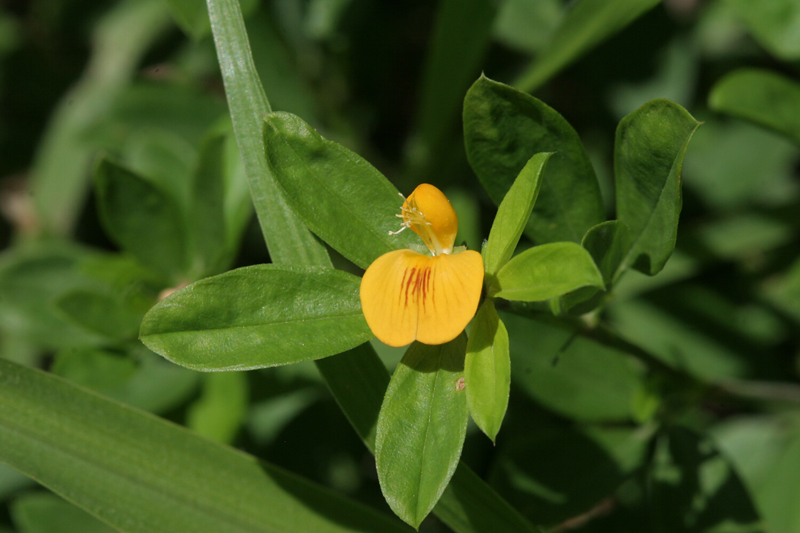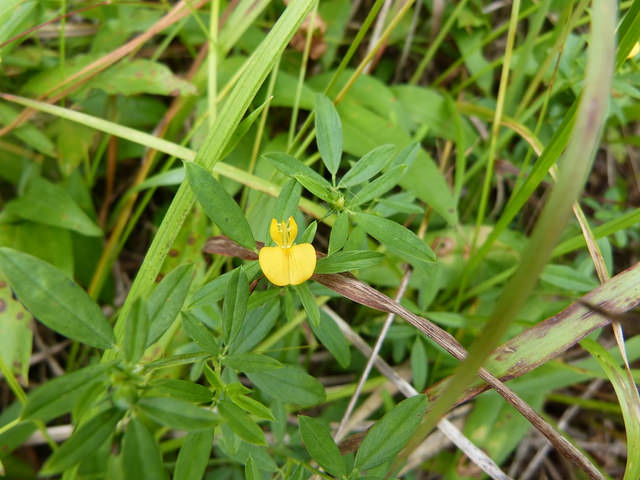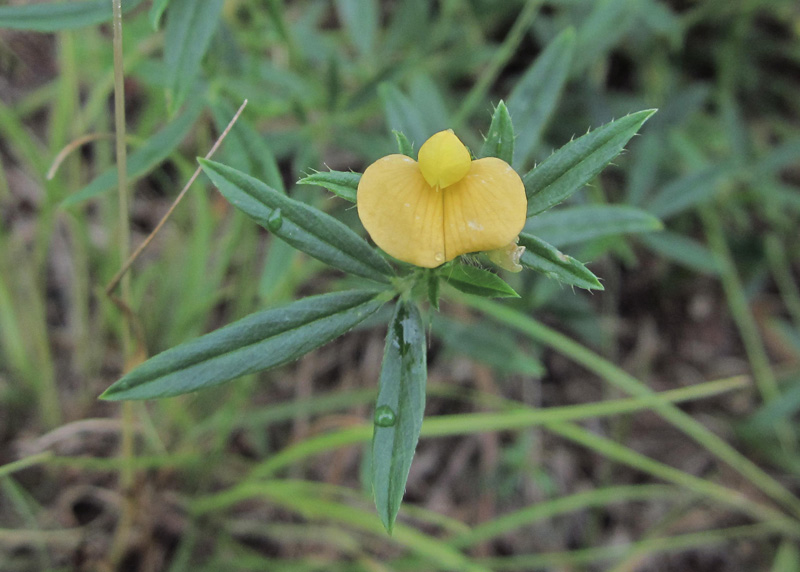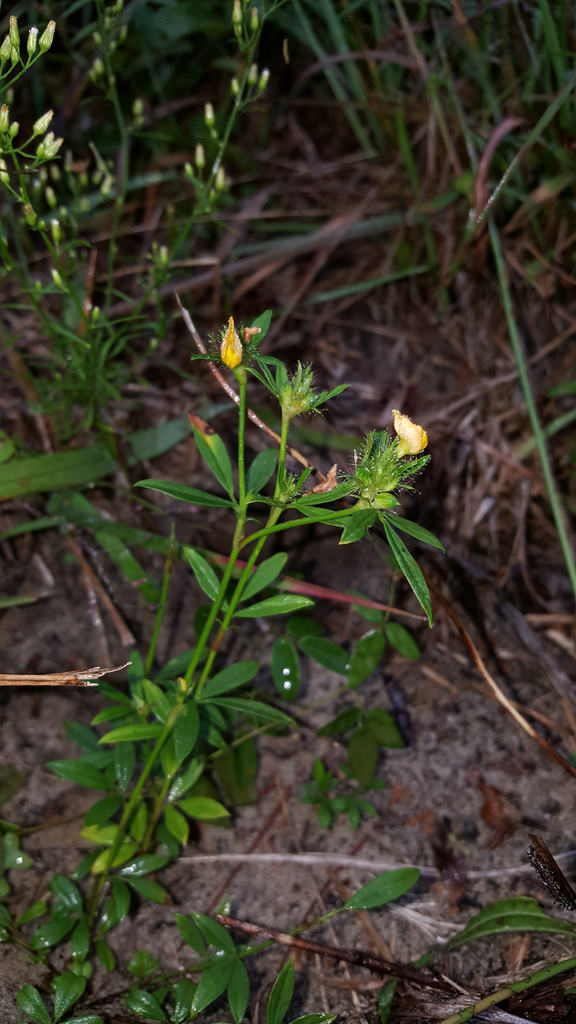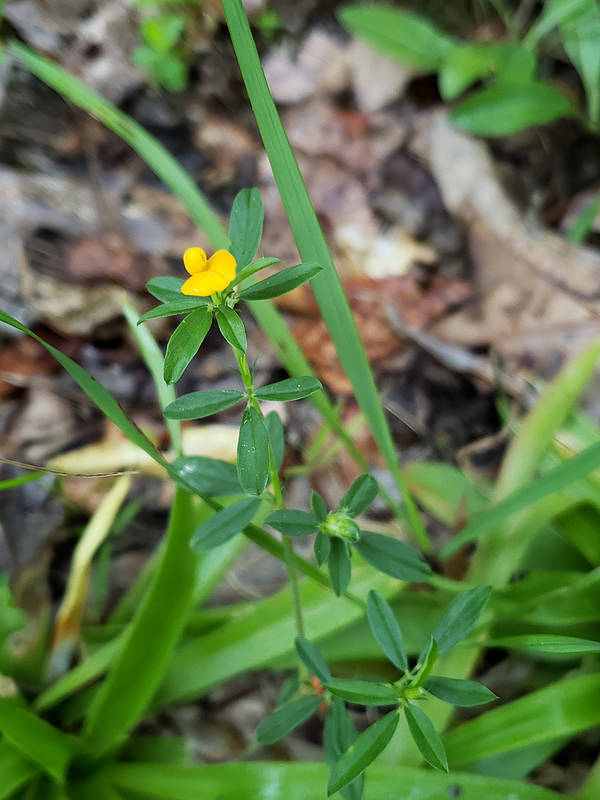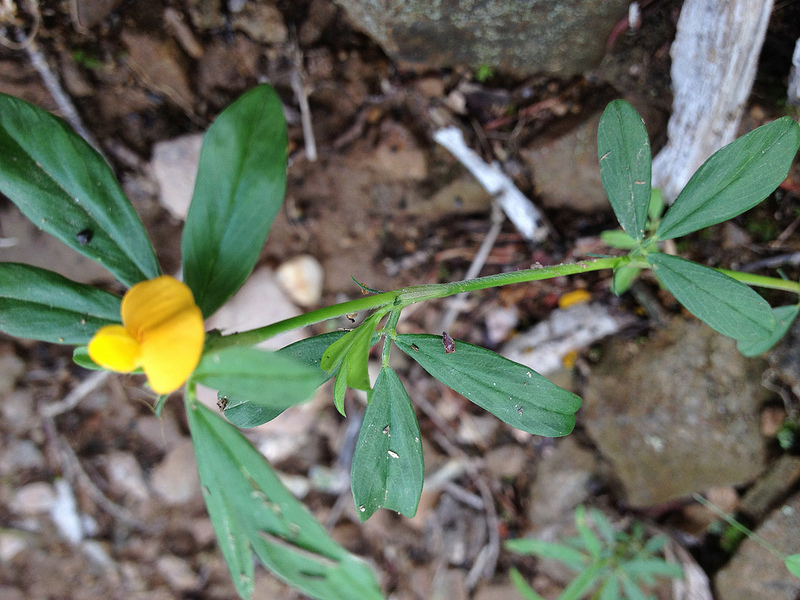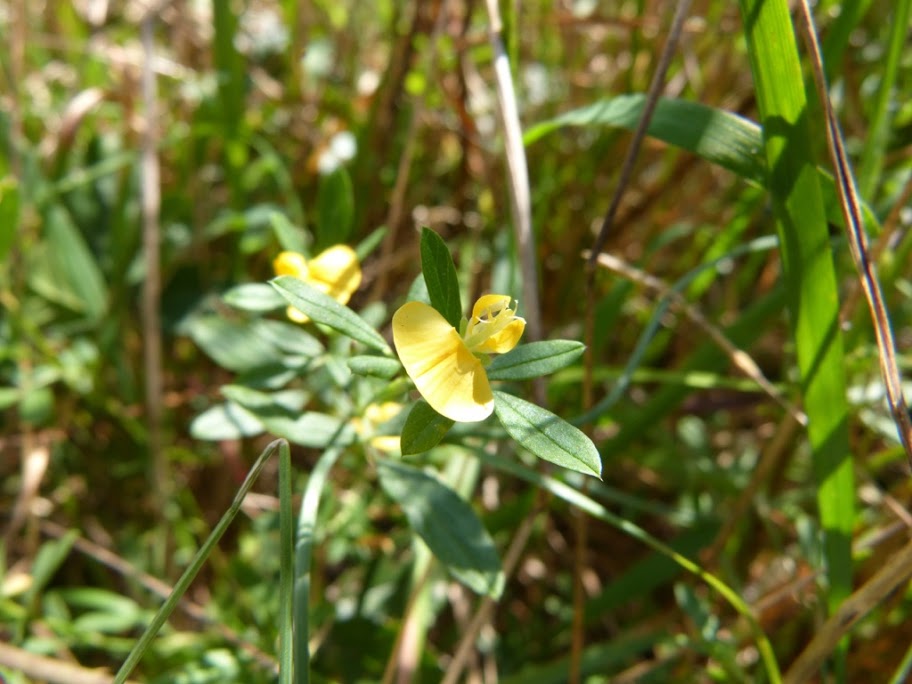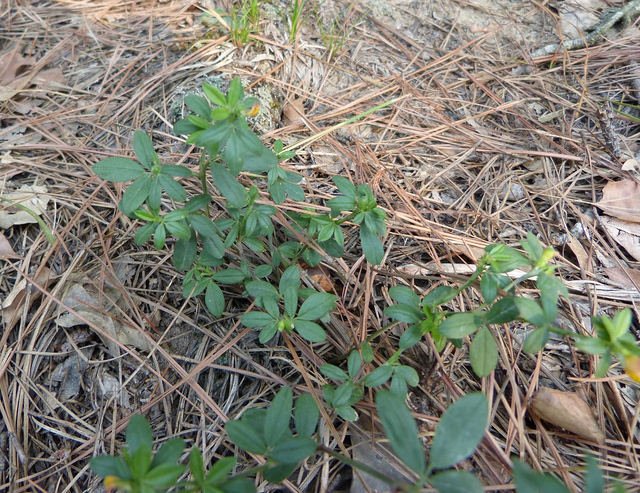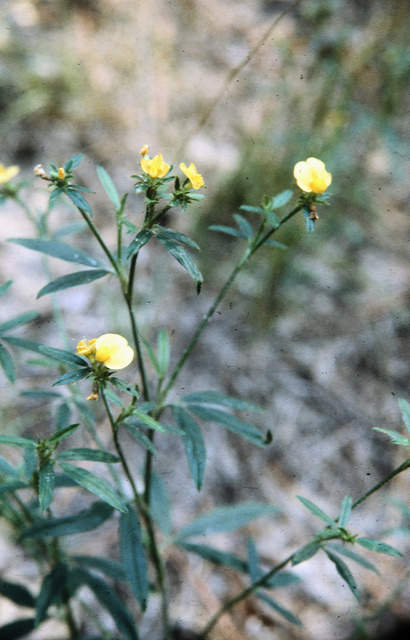Map Snapshot
















100 Records
Status
The Sidebeak Pencilflower is an uncommon plant that can be found spottily across Maryland. Data shows that the plant is most common along the coastal plain but there is a specimen from the Evitt's Creek Quad in Allegany County which was collected in 1904 that is housed in the Norton-Brown Herbarium of the University of Maryland.
Description
The small yellow flowers and foliage of Sidebeak Pencilflower are distinctive.
Where To Find
Look for Sidebeak Pencilflower along dry wooded roadsides with lots of sun.
Seasonality Snapshot
Source: Wikipedia
| Stylosanthes biflora | |
|---|---|

| |
| Scientific classification | |
| Kingdom: | Plantae |
| Clade: | Tracheophytes |
| Clade: | Angiosperms |
| Clade: | Eudicots |
| Clade: | Rosids |
| Order: | Fabales |
| Family: | Fabaceae |
| Subfamily: | Faboideae |
| Genus: | Stylosanthes |
| Species: | S. biflora
|
| Binomial name | |
| Stylosanthes biflora (L.) Britton, Sterns & Poggenb.
| |
Stylosanthes biflora, known by the common names pencil flower,[1] sidebeak pencilflower,[2] and endbeak pencilflower,[3] is a species of flowering plant in the Fabaceae (legume) family. It is native to the Southeastern United States where it is widespread in open areas of native vegetation. It produces yellow-orange flowers in the summer and fall.
This species is highly variable throughout its range, and numerous species had previously been segregated out of it. However, their morphological differences have been found to be so overlapping that the former segregates are now considered the same species.[4]
Description
[edit]S. biflora is a branching perennial that grows 10–30 cm (4–12 in) tall. The stems are wiry, round, hairy, and light to medium green. Each compound leaf has three leaflets (trifoliate) and are alternate on the stems. The leaflets measure 1–4 cm (0.5–1.5 in) long and are elliptic in shape. They have smooth margins. A pair of partly joined bracts, or stipules, tapering to a beak, surrounds the base of each petiole and part of the adjacent stem.[5]
The flowers are orange to yellow and are similar to others in the pea family. The petals consist of large standard top) petal and smaller wings and keel, subtended by bracts.[6][7] The flowers are nearly circular in shape.[8]
Distribution and habitat
[edit]The species is native in the United States from Texas to the west, Illinois to the north, New York to the east, and Florida to the south. It is also present in Arizona.[1] Its habitats include sunny and dry areas, such as glades, prairies, savannas, dry upland forests, tops of bluffs, and riverbanks.[6]
Ecology
[edit]The flowers bloom May to September and are visited by bees and butterflies. It is a host plant for the barred yellow butterfly (Eurema daira).[9]
References
[edit]- ^ a b "NatureServe Explorer 2.0". explorer.natureserve.org.
- ^ USDA, NRCS (n.d.). "Stylosanthes biflora". The PLANTS Database (plants.usda.gov). Greensboro, North Carolina: National Plant Data Team. Retrieved 4 December 2015.
- ^ "Stylosanthes biflora (Endbeak Pencilflower, Pencil Flower, Sidebeak Pencilflower) | North Carolina Extension Gardener Plant Toolbox". plants.ces.ncsu.edu.
- ^ Robert H. Mohlenbrock (1958). "The Stylosanthes biflora complex". Bulletin of the Torrey Botanical Club. 85: 341–346. JSTOR 2483076.
- ^ "Pencil Flower (Stylosanthes biflora)". www.illinoiswildflowers.info.
- ^ a b "Pencil Flower". Missouri Department of Conservation.
- ^ "Pencil Flower". www.fs.usda.gov.
- ^ "Stylosanthes biflora page". www.missouriplants.com.
- ^ "HOSTS - The Hostplants and Caterpillars Database at the Natural History Museum". www.nhm.ac.uk.

